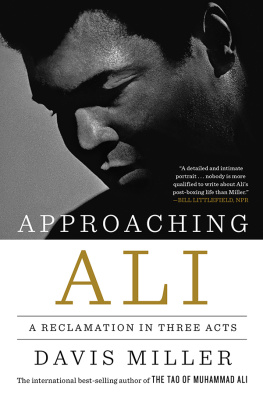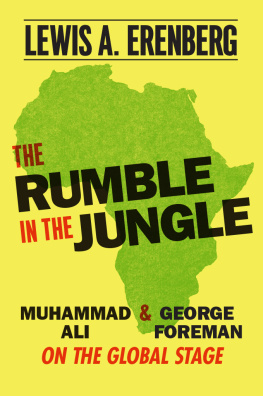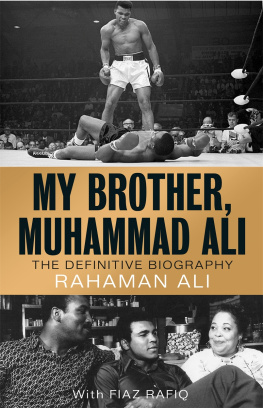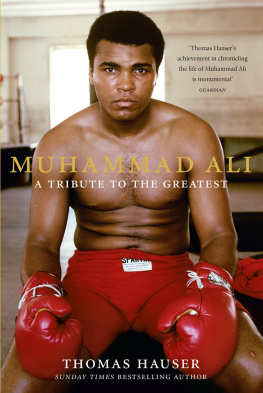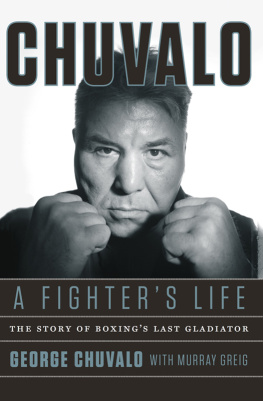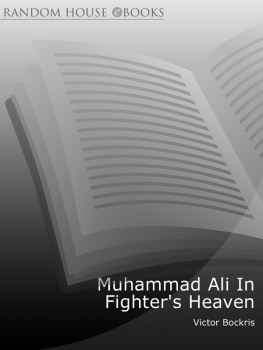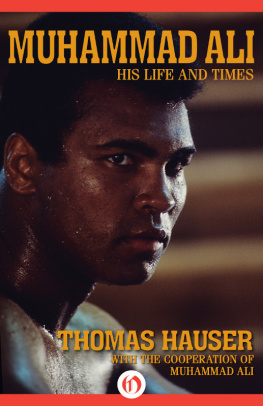Ali Muhammad - The fight
Here you can read online Ali Muhammad - The fight full text of the book (entire story) in english for free. Download pdf and epub, get meaning, cover and reviews about this ebook. City: United States, year: 2013, publisher: Random House Publishing Group, genre: Detective and thriller. Description of the work, (preface) as well as reviews are available. Best literature library LitArk.com created for fans of good reading and offers a wide selection of genres:
Romance novel
Science fiction
Adventure
Detective
Science
History
Home and family
Prose
Art
Politics
Computer
Non-fiction
Religion
Business
Children
Humor
Choose a favorite category and find really read worthwhile books. Enjoy immersion in the world of imagination, feel the emotions of the characters or learn something new for yourself, make an fascinating discovery.

- Book:The fight
- Author:
- Publisher:Random House Publishing Group
- Genre:
- Year:2013
- City:United States
- Rating:5 / 5
- Favourites:Add to favourites
- Your mark:
- 100
- 1
- 2
- 3
- 4
- 5
The fight: summary, description and annotation
We offer to read an annotation, description, summary or preface (depends on what the author of the book "The fight" wrote himself). If you haven't found the necessary information about the book — write in the comments, we will try to find it.
Abstract: The author tells the tale of a fight between Muhammad Ali and George Foreman in Kinshasa, Zaire, in 1975, for which each fighter was paid five millions dollars
The fight — read online for free the complete book (whole text) full work
Below is the text of the book, divided by pages. System saving the place of the last page read, allows you to conveniently read the book "The fight" online for free, without having to search again every time where you left off. Put a bookmark, and you can go to the page where you finished reading at any time.
Font size:
Interval:
Bookmark:
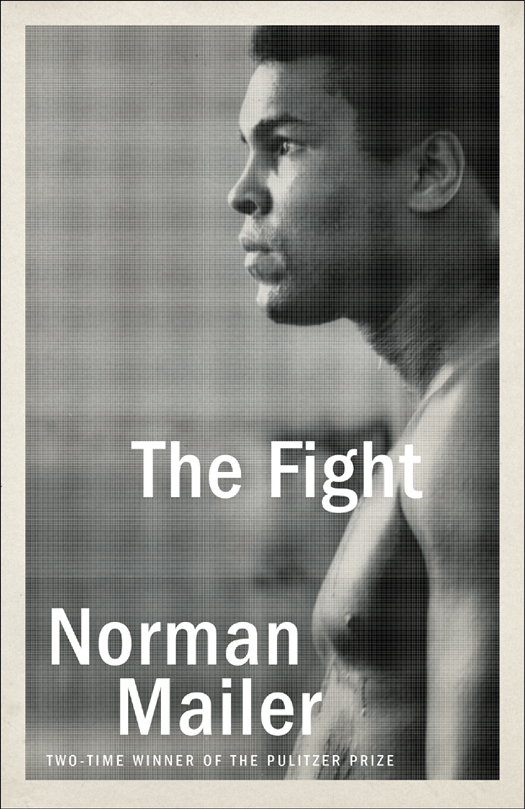
[Norman Mailer] loomed over American letters longer and larger than any writer of his generation.
The New York Times
A writer of the greatest and most reckless talent.
The New Yorker
Mailer is indispensable, an American treasure.
The Washington Post
A devastatingly alive and original creative mind.
Life
Mailer is fierce, courageous, and reckless and nearly everything he writes has sections of headlong brilliance.
The New York Review of Books
The largest mind and imagination at work [in modern] American literature Unlike just about every American writer since Henry James, Mailer has managed to grow and become richer in wisdom with each new book.
Chicago Tribune
Mailer is a master of his craft. His language carries you through the story like a leaf on a stream.
The Cincinnati Post
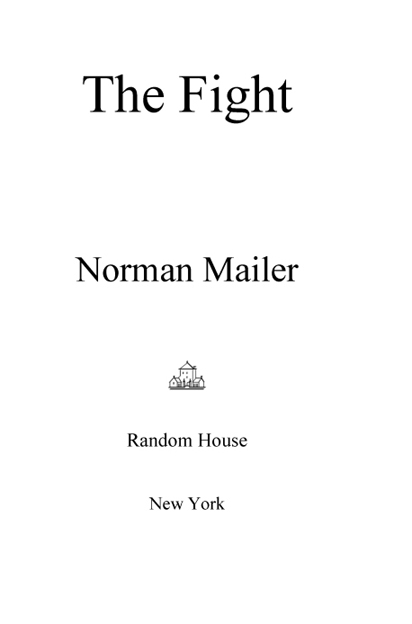
2013 Random House eBook Edition
Copyright 1975 by Norman Mailer
All rights reserved.
Published in the United States by Random House Trade Paperbacks, an imprint of The Random House Publishing Group, a division of Random House LLC, a Penguin Random House Company, New York.
R ANDOM H OUSE and the H OUSE colophon are registered trademarks of Random House LLC.
Originally published in hardcover in the United States by Little, Brown and Company, Boston, in 1975.
Portions of this book originally appeared in Playboy magazine.
Grateful acknowledgment is made to Grove/Atlantic, Inc., and Faber and Faber Ltd. for permission to reprint an excerpt from The Palmwine Drunkard by Amos Tutuola (published by Faber and Faber Ltd. as The Palm Wine Drinkard), copyright 1953 by George Braziller, copyright the Estate of Amos Tutuola. Reprinted by permission of Grove/Atlantic, Inc., and Faber and Faber Ltd.
Library of Congress Cataloging-in-Publication Data
Mailer, Norman
The fight / Norman Mailer.
p. cm.
Originally published: Boston: Little, Brown, [1975]
eISBN: 978-0-8129-8596-2
www.atrandom.com
v3.1
DYING OF THIRST
T HERE IS ALWAYS a shock in seeing him again. Not live as in television but standing before you, looking his best. Then the Worlds Greatest Athlete is in danger of being our most beautiful man, and the vocabulary of Camp is doomed to appear. Women draw an audible breath. Men look down. They are reminded again of their lack of worth. If Ali never opened his mouth to quiver the jellies of public opinion, he would still inspire love and hate. For he is the Prince of Heaven so says the silence around his body when he is luminous.
When he is depressed, however, his pale skin turns the color of coffee with milky water, no cream. There is the sickly green of a depressed morning in the muddy washes of the flesh. He looks not quite well. That may be a fair description of how he appeared at his training camp in Deer Lake, Pennsylvania, on a September afternoon seven weeks before his fight in Kinshasa with George Foreman.
His sparring was spiritless. Worse. He kept getting hit with stupid punches, shots he would normally avoid, and that was not like Ali! There was an art to watching him train and you acquired it over the years. Other champions picked sparring partners who could imitate the style of their next opponent and, when they could afford it, added a fighter who was congenial: someone they could hit at will, someone fun to box. Ali did this also, but reversed the order. For the second fight with Sonny Liston, his favorite had been Jimmy Ellis, an intricate artist who had nothing in common with Sonny. As boxers, Ellis and Liston had such different moves one could not pass a bowl of soup to the other without spilling it. Of course, Ali had other sparring partners for that fight. Shotgun Sheldon comes to mind. Ali would lie on the ropes while Sheldon hit him a hundred punches to the belly that was Ali conditioning stomach and ribs to take Listons pounding. In that direction lay his duty, but his pleasure was by way of sparring with Ellis as if Ali had no need to study Sonnys style when he could elaborate the wit and dazzle of his own.
Fighters generally use a training period to build confidence in their reflexes, even as an average skier, after a week of work on his parallel, can begin to think he will yet look like an expert. In later years, however, Ali would concentrate less on building his own speed and more on how to take punches. Now, part of his art was to reduce the force of each blow he received to the head and then fraction it further. Every fighter does that, indeed a young boxer will not last long if his neck fails to swivel at the instant he is hit, but it was as if Ali were teaching his nervous system to transmit shock faster than other men could.
Maybe all illness results from a failure of communication between mind and body. It is certainly true of such quick disease as a knockout. The mind can no longer send a word to the limbs. The extreme of this theory, laid down by Cus DAmato when managing Floyd Patterson and Jos Torres, is that a pugilist with an authentic desire to win cannot be knocked out if he sees the punch coming, for then he suffers no dramatic lack of communication. The blow may hurt but cannot wipe him out. In contrast, a five-punch combination in which every shot lands is certain to stampede any opponent into unconsciousness. No matter how light the blows, a jackpot has been struck. The sudden overloading of the victims message center is bound to produce that inrush of confusion known as coma.
Now it was as if Ali carried the idea to some advanced place where he could assimilate punches faster than other fighters, could literally transmit the shock through more parts of his body, or direct it to the best path, as if ideally he were working toward the ability to receive that five-punch combination (or six or seven!) yet be so ready to ship the impact out to each arm, each organ and each leg, that the punishment might be digested, and the mind remain clear. It was a study to watch Ali take punches. He would lie on the ropes and paw at his sparring partner like a mother cat goading her kitten to belt away. Then Ali would flip up his glove and let the others punch bounce from that glove off his head, repeating the move from other angles, as if the second half of the art of getting hit was to learn the trajectories with which punches glanced off your gloves and still hit you; Ali was always studying how to deaden such shots or punish the glove that threw the punch, forever elaborating his inner comprehension of how to trap, damp, modify, mock, curve, cock, warp, distort, deflect, tip, and turn the bombs that came toward him, and do this with a minimum of movement, back against the ropes, languid hands up. He invariably trained by a scenario that cast him as a fighter in deep fatigue, too tired to raise his arms in the twelfth round of a fifteen-round fight. Such training may have saved him from being knocked out by Frazier in their first fight, such training had been explored by him in every fight since. His corner would scream Stop playing!, the judges would score against him for lying on the ropes, the fight writers would report that he did not look like the old Ali and all the while he was refining methods.
Font size:
Interval:
Bookmark:
Similar books «The fight»
Look at similar books to The fight. We have selected literature similar in name and meaning in the hope of providing readers with more options to find new, interesting, not yet read works.
Discussion, reviews of the book The fight and just readers' own opinions. Leave your comments, write what you think about the work, its meaning or the main characters. Specify what exactly you liked and what you didn't like, and why you think so.


